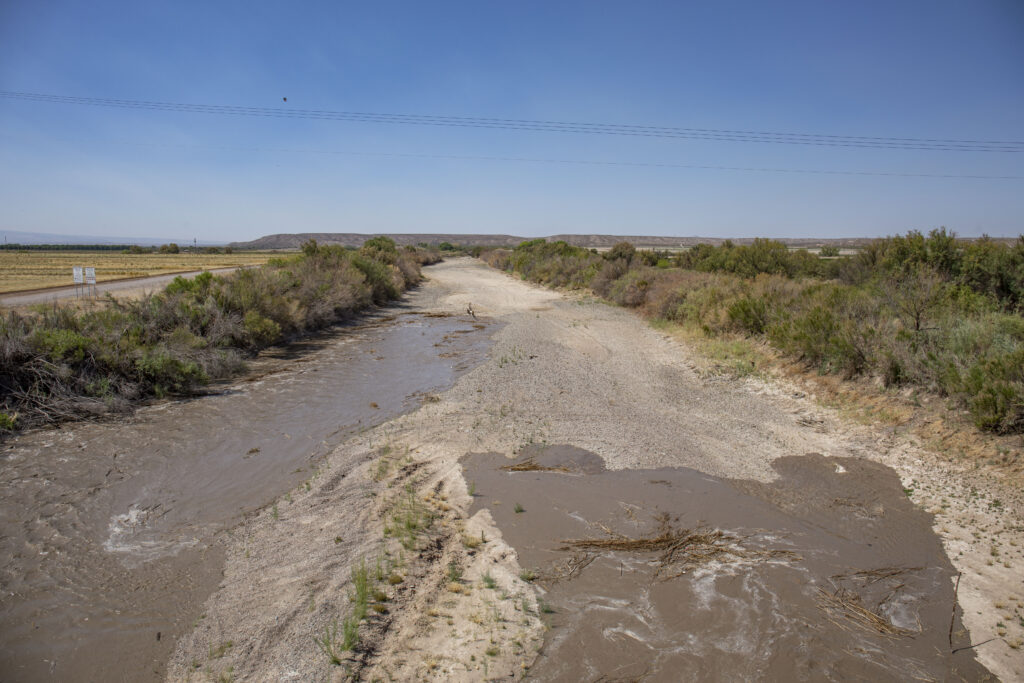Rio Grande water released from Caballo Dam on June 1, 2022. The water travels downstream for several days to reach the riverbed running through El Paso, Texas. Releases used to come in March or April, but with less water flowing downstream, managers now wait until nearly the middle of the growing season. (Photo by Diana Cervantes for Source NM)
The new special master for the Rio Grande water fight between Texas and New Mexico is asking for an update from all the parties in a scheduled Oct. 23 hearing in Denver.
The U.S. Supreme Court appointed a new judge to supervise the case in July, following the high court’s June ruling that dismissed a potential deal to end a decade of litigation between New Mexico and Texas.
SCOTUS appoints new special master in Texas v. New Mexico Rio Grande case
Special masters act as a trial judge in cases. They decide issues and write reports to inform the U.S. Supreme Court’s ultimate opinions in a case.
U.S. Court of Appeals for the Third Circuit Judge D. Brooks Smith, appointed by the Bush administration, ordered the parties on Sept. 9 to present the history of the case and suggest the next steps in the resolution.
Whether the case goes to trial or back to the negotiation table remains to be seen.
The case is officially called Original No. 141 Texas v. New Mexico and Colorado. Colorado is tangential to the lawsuit. The dispute is primarily between Texas and New Mexico.
In a 2013 complaint, Texas alleged that years of pumping in New Mexico below Elephant Butte Reservoir took Rio Grande owed to Texas.
That would violate the 85-year-old document — a compact from 1939 — that governs how Rio Grande water is split between Colorado, New Mexico and Texas. The Rio Grande Compact also covers treaty obligations to Mexico, and agreements to provide water to regional irrigation districts.
In 2018, the U.S. Supreme Court allowed the federal government to join the case. Justices unanimously accepted the federal government’s arguments that New Mexico groundwater pumping threatened the treaty and irrigation water deliveries.
After one half of a trial and nearly a year of negotiations, the states — Colorado, Texas and New Mexico — put forward an eleventh-hour deal to end the lawsuit, which included adding a river gage at the Texas-New Mexico border. Attorneys for the federal government and the regional irrigation districts objected to the deal, arguing it added unfair requirements and was void without their agreement.
A previous special master recommended the U.S. Supreme Court accept the states’ deal over the federal government’s objections.
But in June, the high court narrowly sided with the federal government rejecting the deal, ruling in a 5-4 opinion that the case should continue.

